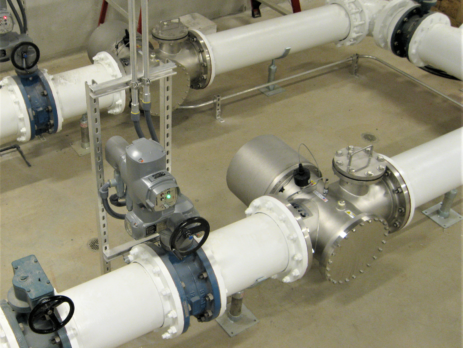Evoqua ETS-UV for Efficient Wastewater Disinfection
The Evoqua ETS-UV™ plays a crucial role in disinfecting municipal wastewater effluent. Here are the key features and benefits:
Two Types of UV Disinfection Systems Used for Wastewater Treatment
UV disinfection can be installed in an open channel or a closed vessel.
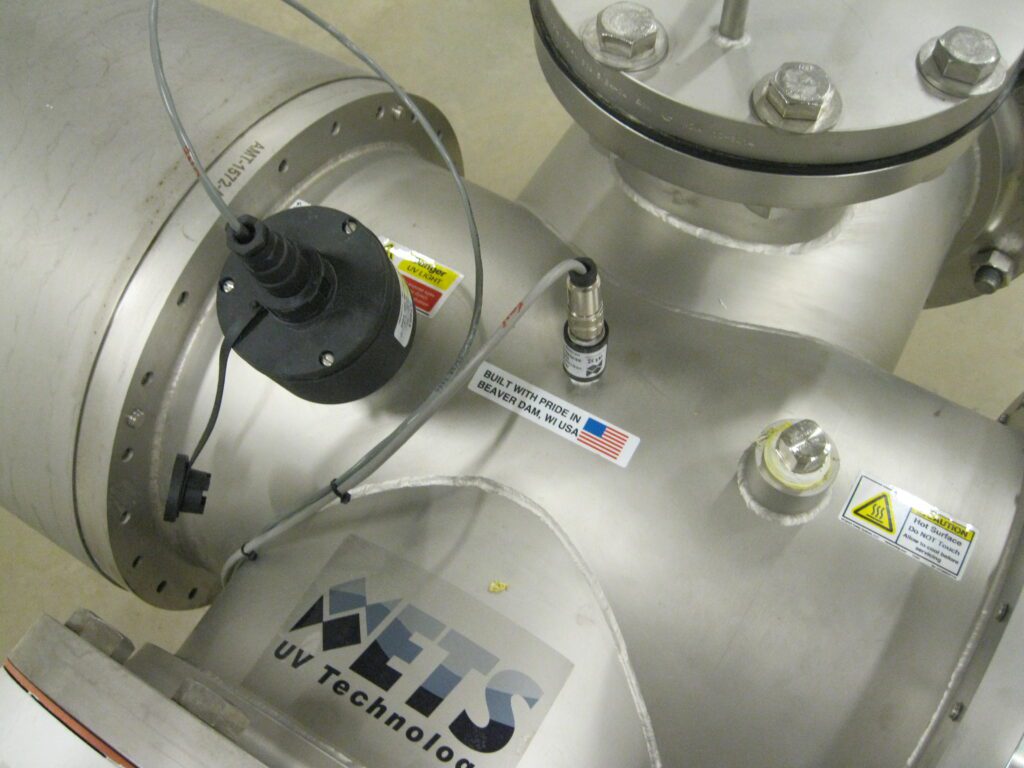
Level control in open-channel UV systems is often achieved using a motorized weir gate mechanism that requires maintenance and is prone to blocking. Open channel systems frequently suffer from poor hydraulics, causing the incoming wastewater to flow along the top or bottom of the lamp banks, resulting in inadequate disinfection.
Closed-vessel UV Systems (Growing in Popularity)
- Directly installed into the piping system.
- No need for a concrete channel, reducing installation costs.
- Safer for operators by eliminating UV light exposure.
- Compact design with fewer lamps, resulting in less maintenance.
- Installed vertically or horizontally.
- Access hatch allows for easy bulb replacement.
- No requirement for a downstream level control device.
Main Features of the Evoqua ETS Closed Vessel UV System
- 316 stainless steel UV chamber.
- High-intensity UV lamps shielded by quartz sleeves.
- Control Panel with user friendly interface.
- Automatic sleeve cleaning wiper.
- UV Sensor monitors UV intensity and feeds data to the control panel.
- Temperature sensor protects equipment during water flow interruptions.
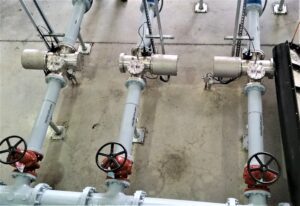
Disinfection Alternatives
The final step in the municipal wastewater treatment plant is disinfection, which kills harmful viruses, bacteria, and other pathogens. The two most common methods of disinfection in the U.S. are ultraviolet (UV) disinfection and chlorine.
Years ago, chlorine was used in almost all wastewater treatment facilities and is still used at some. Chlorine destroys microorganisms by oxidizing their cellular material. It is applied as chlorine gas, hypochlorite solutions, and other chlorine compounds.
Ultraviolet (UV) disinfection stands as the most widely utilized method for municipal waste water disinfection. UV inactivates microorganisms rapidly as they pass by ultraviolet lamps submerged in the water. Within a few seconds of exposure, ultraviolet radiation permanently disrupts the DNA and RNA of microorganisms, preventing them from reproducing or causing infection.
Both chlorine and UV disinfection methods can effectively meet the disinfection requirements for treated wastewater; however, UV disinfection has significant advantages.
Advantages of UV Disinfection
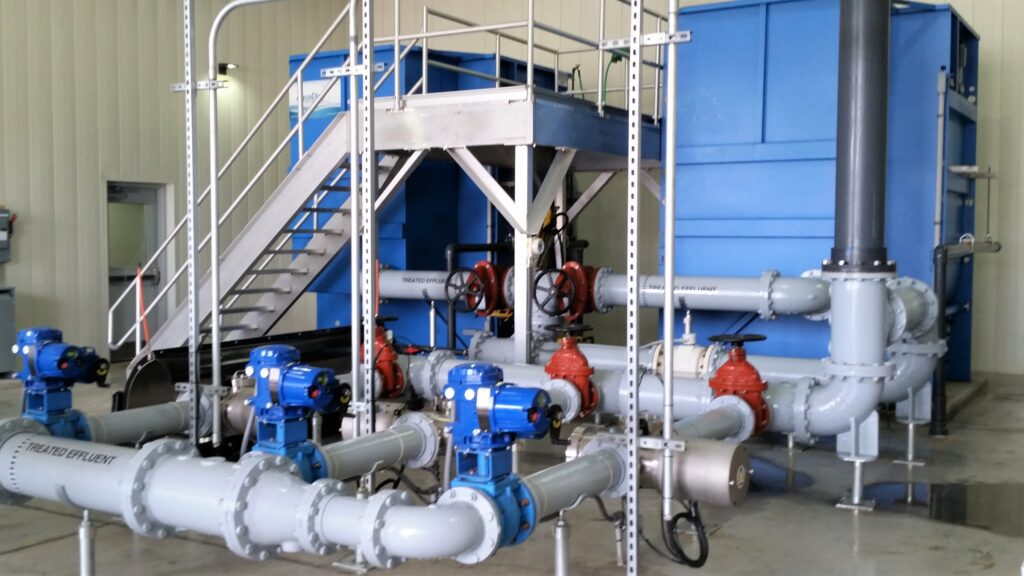
- Effective at inactivating most viruses, spores, and cysts.
- Inactivates chlorine-resistant organisms like Cryptosporidium and Giardia.
- Requires no storage, handling, or transportation of toxic or corrosive chemicals.
- Shorter contact time compared with other disinfectants.
- Less space.
- Eliminates the need to generate, handle, transport, and store hazardous or corrosive chemicals.
- Does not produce harmful byproducts.
- Safer for operators.
For the above reasons, many wastewater treatment plants use Evoqua ETS-UV for efficient wastewater disinfection, and drinking water facilities use Evoqua-UV as a barrier against chlorine-tolerant parasites such as Cryptosporidium and Giardia.
Please call us to speak with a sales representative who will gladly discuss equipment options and furnish specs, drawings, and quotes.
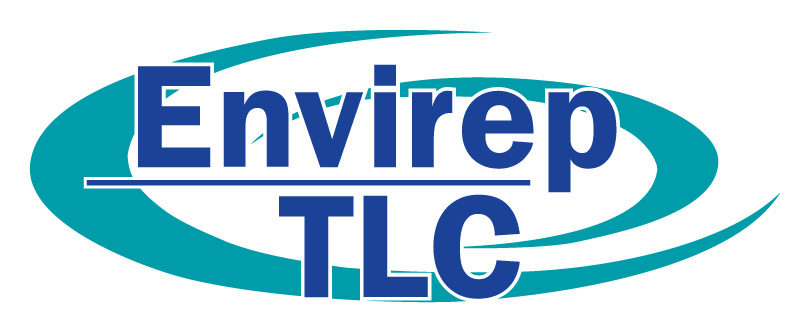
Contact Envirep
Envirep/TLC serves the municipal and industrial water and wastewater market in Pennsylvania, New Jersey, Maryland, Delaware, the District of Columbia, Virginia, and West Virginia.
Contact Envirep at 717-761-7884 or sales@envirep.com.
By Michael Gillespie, President at Envirep

